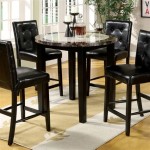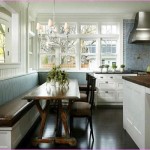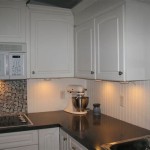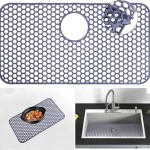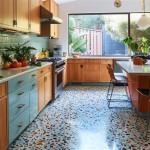What Color Light Bulb for Kitchen
The kitchen serves as a central hub in most homes, requiring versatile lighting that caters to various tasks, from detailed food preparation to casual dining. Selecting the right color light bulb plays a crucial role in creating both a functional and inviting atmosphere. This article explores the different color temperatures available and their suitability for various kitchen applications.
Light bulb color temperature is measured in Kelvins (K). Lower Kelvin values indicate warmer, yellower light, while higher Kelvin values represent cooler, bluer light. Understanding this scale is essential for making informed lighting choices.
Warm White (2700K - 3000K): This range produces a warm, inviting glow, reminiscent of incandescent bulbs. Warm white is excellent for creating a relaxing ambiance, making it well-suited for general kitchen lighting, dining areas, and spaces where a cozy atmosphere is desired. It can, however, sometimes make colors appear slightly less vibrant.
Soft White (3000K - 3500K): Offering a balance between warm and cool tones, soft white is a popular choice for kitchens. It provides sufficient brightness for most tasks while maintaining a welcoming feel. Soft white is generally considered a versatile option suitable for overall kitchen illumination, particularly in spaces with warm-toned cabinets and countertops.
Neutral White (3500K - 4100K): Neutral white provides a crisper, cleaner light than warmer options. This color temperature enhances visibility and is suitable for task lighting areas like countertops and islands where food preparation occurs. It offers a more balanced representation of colors compared to warmer tones, allowing for accurate assessment of ingredients and cooking processes.
Cool White (4100K - 5000K): Emitting a brighter, more energizing light, cool white mimics natural daylight. It is highly effective for task lighting and enhances detail, making it ideal for areas requiring precision, such as under-cabinet lighting, stovetops, and sinks. However, excessive use of cool white in the entire kitchen can create a sterile or clinical atmosphere.
Daylight (5000K - 6500K): This brightest option offers exceptional clarity and mimics the color temperature of midday sunlight. While highly effective for specific tasks requiring acute visual acuity, daylight can feel overly stimulating and is generally not recommended for general kitchen lighting. It's most suitable for specialized applications like detail work or areas lacking natural light.
Layering Light for Optimal Effect: Utilizing a combination of color temperatures can significantly enhance the functionality and aesthetics of a kitchen. Ambient lighting, provided by warmer tones, establishes a welcoming atmosphere, while task lighting, employing cooler temperatures, ensures adequate illumination for specific activities.
Consider Existing Design Elements: The existing color palette of the kitchen should be considered when selecting light bulb color temperatures. Warmer tones complement kitchens with earthier hues and natural materials, while cooler tones pair well with modern, minimalist designs featuring stainless steel and white or gray color schemes.
Dimmable Lighting: Installing dimmable lights offers significant flexibility, allowing adjustments to the brightness and ambiance of the kitchen throughout the day. This feature enables the creation of various moods, from bright and functional for cooking to soft and inviting for dining and relaxation.
Energy Efficiency: Along with color temperature, consider the energy efficiency of the light bulbs. LED bulbs are a highly efficient option, consuming significantly less energy than traditional incandescent bulbs and offering a longer lifespan.
CRI (Color Rendering Index): The CRI measures a light source's ability to accurately render colors. A higher CRI indicates better color accuracy. For kitchens, a CRI of 80 or higher is recommended to ensure accurate representation of food colors and other design elements.
Experimentation and Personal Preference: Ultimately, the best color light bulb for a kitchen depends on personal preference and the specific needs of the space. Experimenting with different color temperatures and layering techniques can help determine the optimal lighting scheme to achieve the desired ambiance and functionality.
Placement and Fixture Design: The placement of light fixtures and their design also influence the perceived color temperature and overall lighting effect. Careful consideration should be given to the fixture's style, material, and diffusion properties to maximize the benefits of the chosen bulb color temperature. For example, frosted glass diffuses light more evenly than clear glass, softening the appearance of cooler color temperatures.
Under-Cabinet Lighting Considerations: Under-cabinet lighting serves a crucial function in illuminating countertops and workspaces. While cool white and daylight options provide excellent visibility for food preparation, they can create harsh shadows. Consider using light diffusers or opting for a slightly warmer color temperature in under-cabinet fixtures to mitigate this issue.

Do You Prefer Warm Cool Or Daylight Lighting For Your Kitchen

Light Bulbs Color Temperature Range Choosing The Batteries Plus

Do You Prefer Warm Cool Or Daylight Lighting For Your Kitchen

The Best Kitchen Lighting How To Choose Yours

How To Choose The Best Light Bulb Color For Your Home Lighting Blog

Light Bulb Color Temperature How To A Room Super Bright Leds

How To Pick The Right Light Bulbs For Your Home Our Favorites Chris Loves Julia

How Light Bulbs Affect Paint Colors Kelvins

Kitchen On Sale Light Kelvin

Feit Electric 35 Watt Equivalent Mr16 Gu10 Bi Pin Base Dimmable Track Light Led Bulb 3000k 4000k 5000k Selectable White 3 Pack




